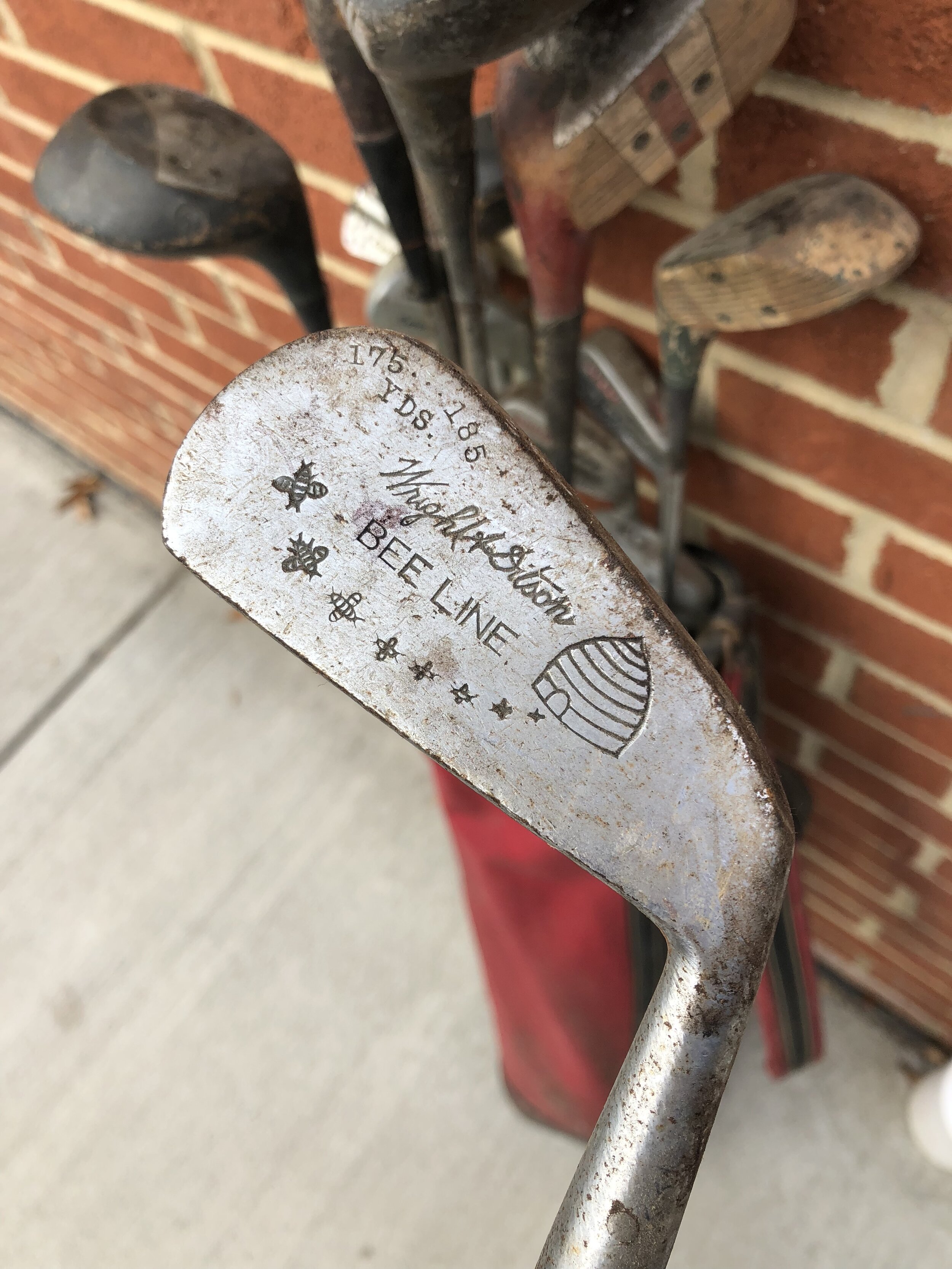To Bee, Or Not To Bee
“What’s with the bee?” (Our most frequently asked question since we launched the NewClub website back in December 2017.)
Back in my college golf days, my teammates and I were always concocting new ways to kill time on long van rides. One such way was a game we called “Country Club.” Each team member would have to select one of the following: 1) a type of tree, 2) a body of water, 3) an animal, and 4) a land mass. From there, we’d mix and match until we agreed on the best combo.
We came up with names like Sassafras Lakes, Red Sheep Stream, and my personal favorite, Canal Pine Pheasant Mountain.
I thought all golf logos could follow only this formula until I stumbled upon an old long iron in my late grandfather’s golf bag that would eventually become NewClub’s guiding staff.
The history of the bee
This is my grandfather’s “Bee Line” 25-degree two iron from Wright and Ditson, circa 1920-1930 (see pictured). Even though the grooves on the face were fairly rusted over, the back of the club was in great condition and featured eight swarming honey bees returning to their hive, all beautifully engraved by hand.
When I found this club, I was captivated. This is the kind of artwork and craftsmanship we don’t see enough of any more. Sure, the golf manufacturers today can stamp our initials on a wedge, but how often do you see one-of-a-kind hand-engraved artwork? (Calling the golf scientists at Seamus Golf...)
Naturally curious about the history of this two iron and its manufacturer, I dug a little deeper.
It turned out that Wright and Ditson was the first ever sporting goods firm in America, founded by George Wright in 1871. Wright, who was an entrepreneur and a hall of fame baseball player, started his business by importing golf clubs and other sports equipment from overseas and selling them in his stores scattered across the East Coast.
He would eventually develop his own lines of clubs and became the first U.S. golf equipment manufacturer to make high-quality hickory shafted clubs that were affordable for the hobbyist and the every-man golfer.
I was amazed how massive a role George Wright played in introducing the game of golf to Americans, and how influential a figure he was in his time.
He hosted the first ever golf exhibition and designed some of the early courses in New England. In fact, 1913 U.S. Open champion Francis Quimet was actually working for Wright when he won the tournament. Who might have instead made history if Wright hadn’t agreed to give Quimet time off to play? Where would the game of golf be without “The greatest game ever played?”
A timeless club
Despite its storied history, what I really love about this golf club is how my grandfather made it his own and kept it in excellent playing condition -- even to this day.
The Bee Line two iron originally had a hickory shaft, a material not known for its long-term durability. But my grandfather reshafted it with a metal I had never seen in a golf club, so it took me a bit of research into my own family history to find out what it was.
My grandfather was actually more of a fisherman than a golfer. Even though he had golf clubs and played as much as he could, he was a school teacher with four daughters at home and a fisherman at heart. His father (my great-grandfather) was a salesman for a fishing line company called Pflueger, so fishing was their default past time. It just so happened that Pflueger had a partnership with Wright and Ditson, and the two iron was probably given to my great-grandfather and eventually passed down.
My grandfather was famous in our family for never wasting a thing, and it’s no surprise he kept this now almost hundred-year-old two iron in the bag. Being the true fisherman he was, he reshafted the club with the most durable and only material he had in stock -- aluminum, most commonly found in a fishing rod.
The NewClub bee is born
Insects are rarely, if ever, seen in golf. But, the honeybee is special.
I was inspired not just by the bee on my grandfather’s two iron, but also because it’s an accurate metaphor for the next generation of modern golfers. Golfers who have a never-ending passion for the game are just like the honeybee, vital to the entire ecosystem so it can grow and thrive.
